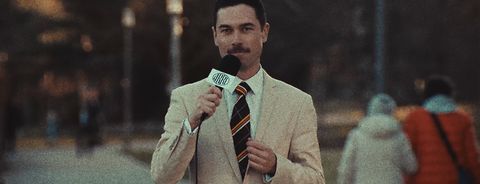We have experimented with several textures, but always found K445 Default to work best when matching ALEXA 35 and ALEXA 35 Xtreme with existing ARRI digital cameras.

ARRI Textures FAQ
Popular questions about ARRI Textures

Popular questions about ARRI Textures
We have experimented with several textures, but always found K445 Default to work best when matching ALEXA 35 and ALEXA 35 Xtreme with existing ARRI digital cameras.
The K445 Default texture works best for green/blue screen work. We also recommend turning Enhanced Sensitivity Mode off when working with green/blue screen
ARRI's Custom Textures are hand-tailored textures that cater the great variety of nuances in personal taste that define an image.
As we gather more feedback from the field about what other types of textures are desired, we will create new Custom Textures and post them on the ARRI Textures website. The “Nostalgic” pre-installed textures proved to be very popular and we had a lot of requests for variations on that theme, so the first batch of Custom Textures for download are exploring the Nostalgic theme.
ARRI Textures are a small binary files. Installing them works like a installing a look file. After downloading the custom set, put the textures in the corresponding subfolder of your USB thumbdrive: /ARRI/ALEXA35/TEXTURES
Once plugged into the camera, the menu will list all texture files within the folder for installation.
No. An ARRI Texture is created by a combination of around 30 image processing settings that are complicated and influence each other. We have not figured out yet how to simplify them so a person that is not an ARRI color scientist can use them. Until we do this, you can use the textures included in the camera and those we will upload to our website.
ARRI Textures is a new feature for us and for cinematographers, DITs, and postproduction houses alike. So, we want to explore it slowly and carefully before we provide stronger options.
The Textures do not stand on their own. Aside from the choice of location, set design, costumes, lighting, fog, and other such camera-external factors, the final image is created by the combination of the cinematographer's choice of lens, T-stop, filters, frame rate, shutter, exposure index and color look in addition to the ARRI Textures. All these factors influence each other. For instance, a high exposure index in combination with a very contrasty texture will make grain more visible, which is probably not a good idea. We think it will take us all a while to do some serious testing and to figure out what works best and what does not. To avoid bad images resulting from unintentionally chosen bad combinations of these factors, we have kept the textures subtle.
How much an ARRI Texture is visible depends greatly on your viewing setup. Something that will be clearly visible on a 7" on-board monitor will be ugly and way too strong on a large, high-quality HDR display. Something that looks great on a large, high-quality HDR display will be barely visible on a 7" on- board monitor. We decided to be on the safe side and therefore provide subtle textures that will look good on large, high-quality HDR displays, even though they may be difficult to see on smaller monitors. We strongly recommend to test ARRI Textures in pre-production with a large, high-quality HDR display or DCI projector, so you know what you will be getting.